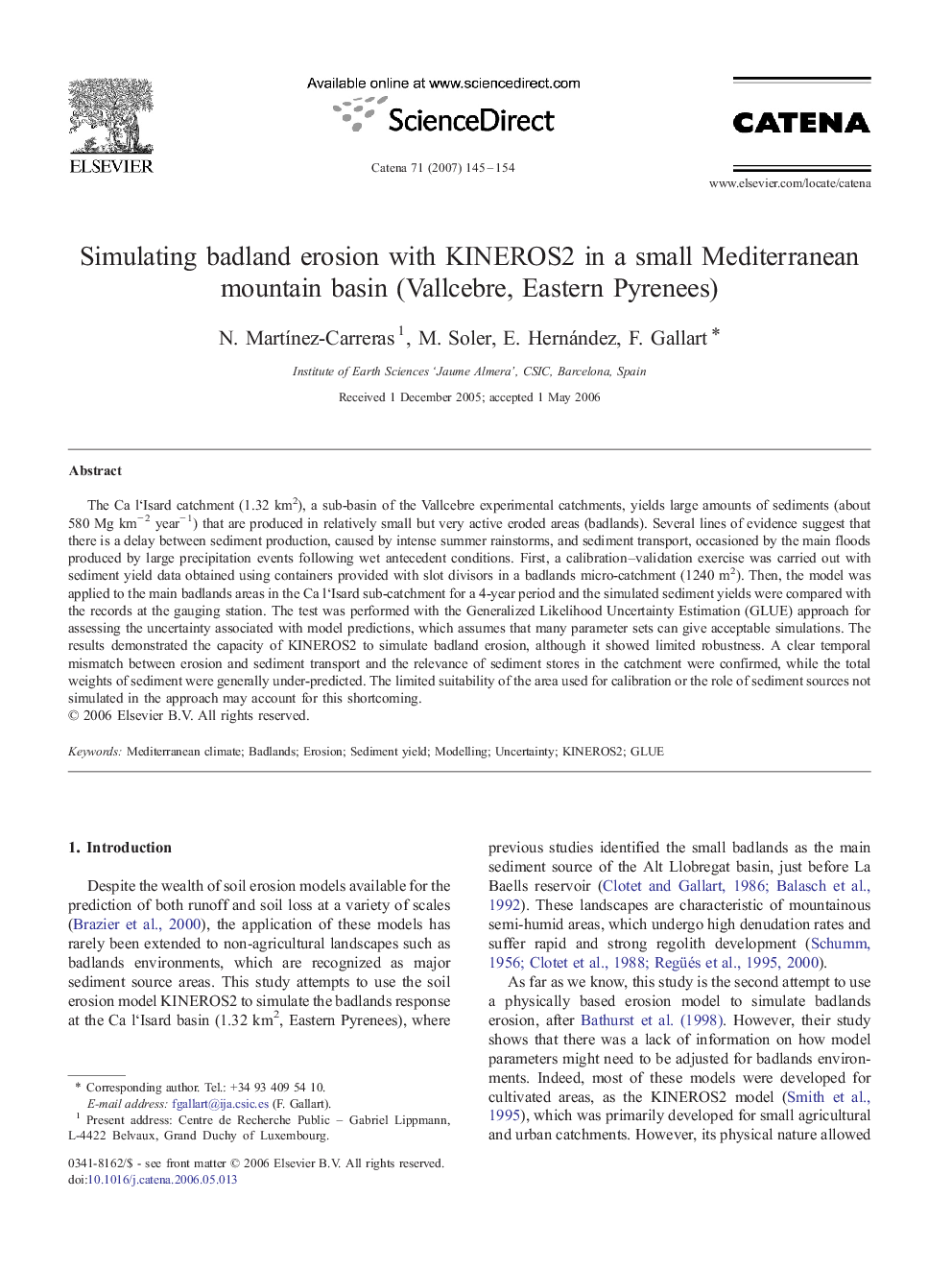| Article ID | Journal | Published Year | Pages | File Type |
|---|---|---|---|---|
| 4572615 | CATENA | 2007 | 10 Pages |
The Ca lʻIsard catchment (1.32 km2), a sub-basin of the Vallcebre experimental catchments, yields large amounts of sediments (about 580 Mg km− 2 year− 1) that are produced in relatively small but very active eroded areas (badlands). Several lines of evidence suggest that there is a delay between sediment production, caused by intense summer rainstorms, and sediment transport, occasioned by the main floods produced by large precipitation events following wet antecedent conditions. First, a calibration–validation exercise was carried out with sediment yield data obtained using containers provided with slot divisors in a badlands micro-catchment (1240 m2). Then, the model was applied to the main badlands areas in the Ca lʻIsard sub-catchment for a 4-year period and the simulated sediment yields were compared with the records at the gauging station. The test was performed with the Generalized Likelihood Uncertainty Estimation (GLUE) approach for assessing the uncertainty associated with model predictions, which assumes that many parameter sets can give acceptable simulations. The results demonstrated the capacity of KINEROS2 to simulate badland erosion, although it showed limited robustness. A clear temporal mismatch between erosion and sediment transport and the relevance of sediment stores in the catchment were confirmed, while the total weights of sediment were generally under-predicted. The limited suitability of the area used for calibration or the role of sediment sources not simulated in the approach may account for this shortcoming.
